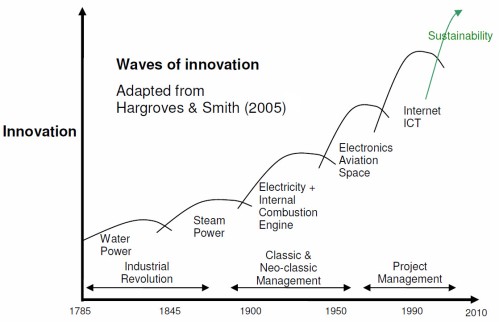 Projects are done by people for people and through the medium of social media, people power is growing. Successful project managers know this and use it to their advantage; they create a team culture focused on working with other stakeholders to create success.
Projects are done by people for people and through the medium of social media, people power is growing. Successful project managers know this and use it to their advantage; they create a team culture focused on working with other stakeholders to create success.
Project managers know when they get this right because their project team will challenge, follow and support them, and each other, in order to get the job done. Not only that, but word spreads and other people inside the organisation will want to join the team or be associated with its success. When a PM achieves this, they know they have created something special and paradoxically are under less pressure, can get a good night’s sleep, and as a consequence are fully refreshed each day to keep building the success. This is good for the people and great for the organisation!!
Developing the skills and personal characteristics needed to develop and lead a committed team needs more then technical training. Experience, reflection, coaching and mentoring all help the project manager grow and develop (and it’s a process that never stops). Five signs that they are on the path to becoming a great team leader are:
- They’re well liked. Great leaders make people feel good about themselves; they speak to people in a way that they like to be spoken to, are clear about what needs to be achieved[1], and are also interested in their lives outside work and display a little vulnerability every now and again to demonstrate that they are human. They’ll always start the day with a ‘good morning’, the evening with a ‘good night’ and every question or interaction will be met with courtesy. When the team picks up on this the project area will be filled with good humour and great productivity.
- They put effort into building and maintaining teams. Designing great teams takes lots of thought and time – you need the right people ‘on the bus[2]’ and you need to get the wrong people ‘off the bus’. A great project manager doesn’t accept the people who are ‘free’ or ‘on the bench’ unless they’re the right people and they’ll negotiate intensely for the people that they really need, going to great lengths to recruit people into the vision that they have. Once the team is in place, they never stop leading it, building it, encouraging it, performance managing it and celebrating it.
- They involve everyone in planning. Or at least everyone that matters! The PM identifies the team members and other stakeholders that need to be involved; creates a productive, enjoyable environment, and leads the process. They want to ensure that they get the most out of the time and at the end have a plan that the team has built and believe in.
- They take the blame and share the credit. Great project managers are like umbrellas. When the criticism is pouring down they ensure that the team is protected from it. They then ensure that the message passed down is presented as an opportunity to improve not a problem to be fixed. Similarly, when the sun is out and the praise is beaming down, they ensure that the people who do the real work bask in it and are rewarded for it. When they talk about how successful a project has been, they talk about the strengths of the team and the qualities they have shown, never about themselves.
- They manage up well. Stakeholder engagement, particularly senior stakeholder engagement is the key to project success[3]. Great project mangers know they need senior executive support to help clear roadblocks and deliver resources and know how to tap into the organisation’s powerlines for the support they need.
Great project mangers are also good technical managers; they have an adequate understand the technology of the project and they know how the organisation’s management systems and methodologies work. But they also know they can delegate much of this aspect of their work to technologists and administrative experts within their team. And if the team is fully committed to achieving project success, these experts will probably do a better job than the project manager anyway.
Projects are done by people for people and the great project managers know how to lead and motivate[4] ‘their people’ to create a successful team that in turn will work with their stakeholders to create a successful project outcome.
[1] For more on delegation see: http://www.mosaicprojects.com.au/WhitePapers/WP1091_Delegation.pdf
[2] In the classic book Good to Great, Jim Collins says, “…to build a successful organization and team you must get the right people on the bus.”
[3] This is the focus of my book Advising Upwards: A Framework for Understanding and Engaging Senior Management Stakeholders, see http://www.mosaicprojects.com.au/Book_Sales.html#Adv_Up
[4] For more on leadership see: http://www.mosaicprojects.com.au/WhitePapers/WP1014_Leadership.pdf








